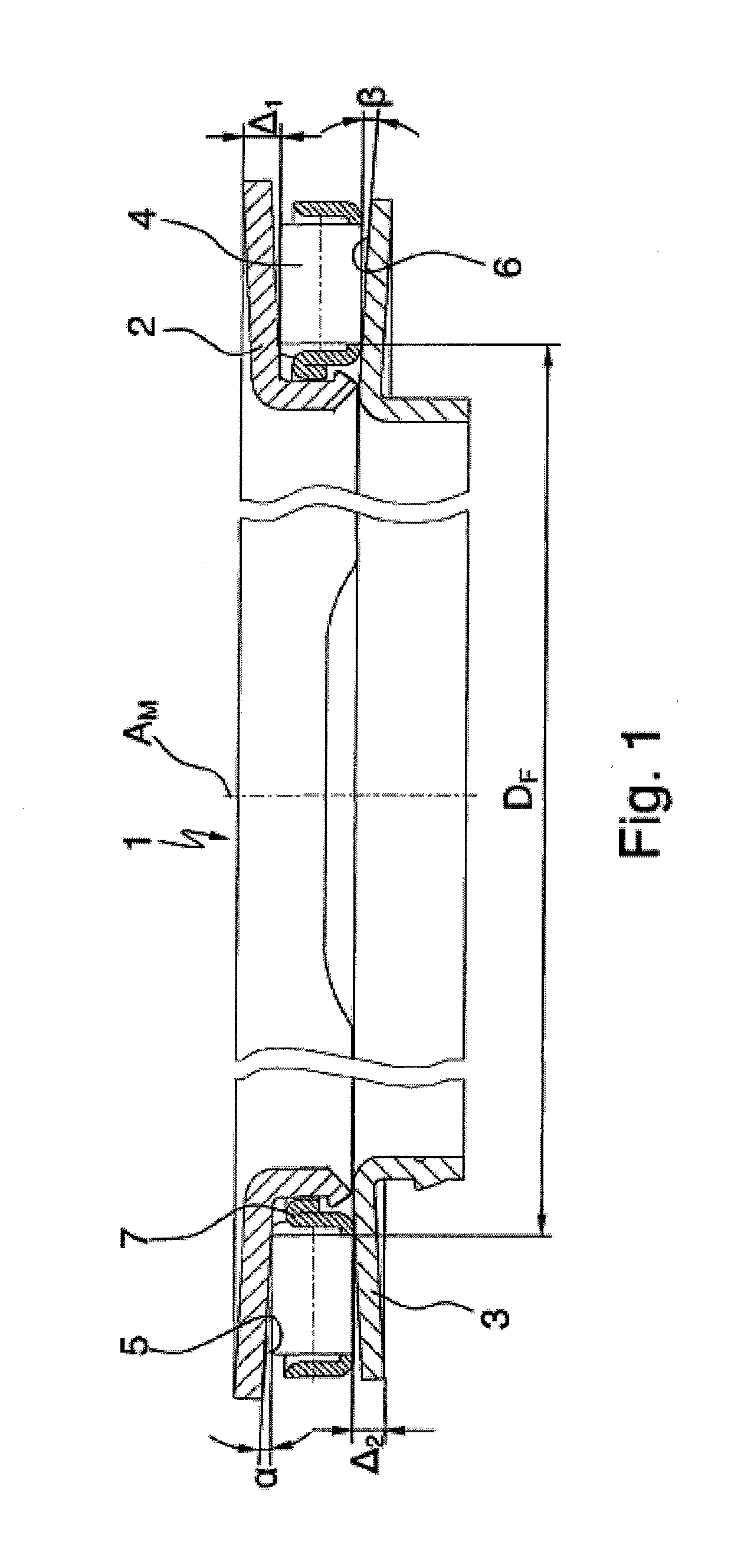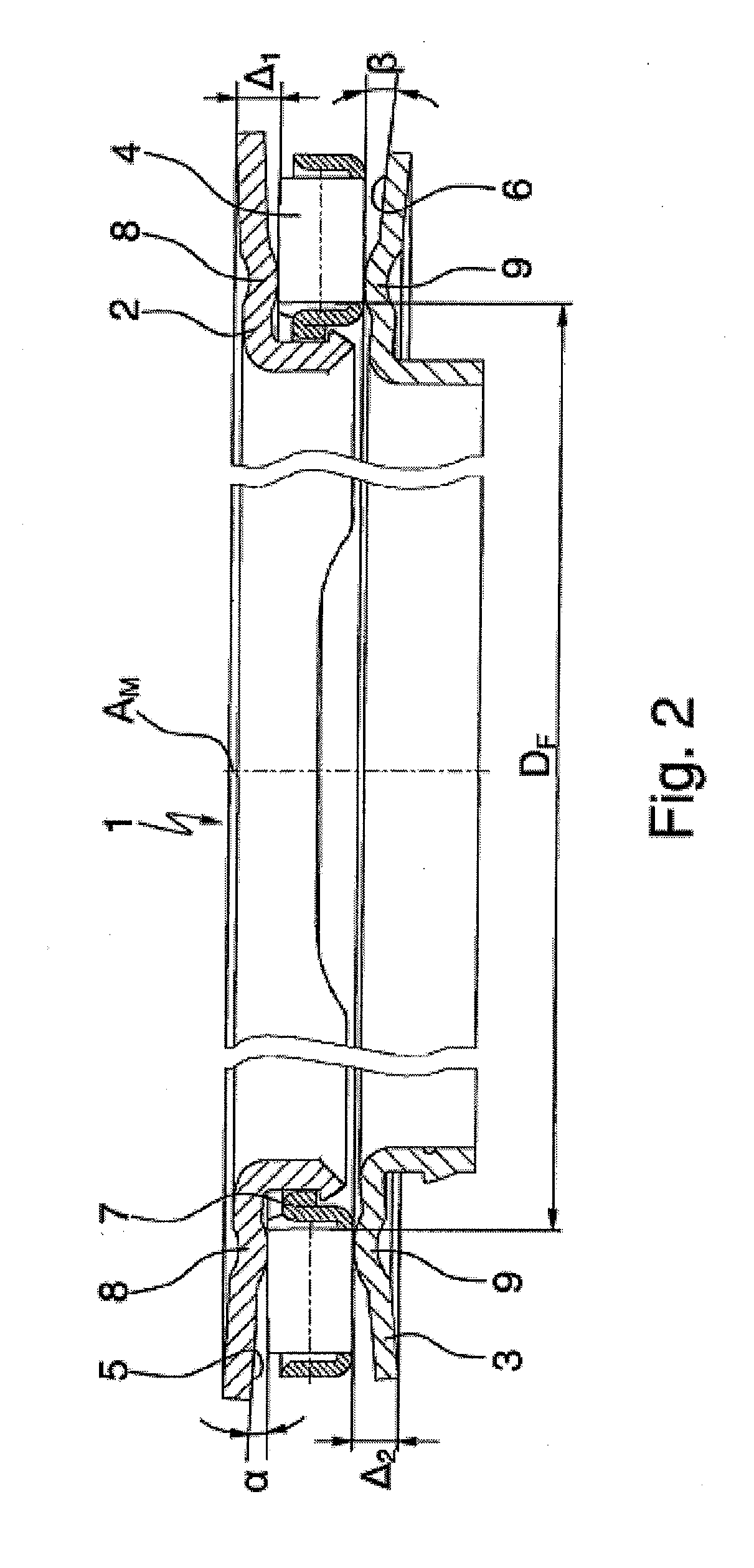Axial Anti-friction bearing, in particular axial needle bearing
a technology of anti-friction bearings and needle bearings, which is applied in the direction of roller bearings, elastic bearings, mechanical equipment, etc., can solve the problems of reduced efficiency, increased wear of races, and reduced desired efficiency of automatic transmission, so as to achieve small race support and small width
- Summary
- Abstract
- Description
- Claims
- Application Information
AI Technical Summary
Benefits of technology
Problems solved by technology
Method used
Image
Examples
first embodiment
[0017]FIG. 1 an enlarged cross-section of an axial roller bearing designed in accordance with the invention;
[0018]FIG. 2 an enlarged cross-section of a variant of the first embodiment of the axial roller bearing designed in accordance with the invention;
second embodiment
[0019]FIG. 3 an enlarged cross-section of an axial roller bearing designed in accordance with the invention.
DETAILED DESCRIPTION OF THE DRAWINGS
[0020]Visible in FIGS. 1 through 3 are three axial roller bearings 1, each implemented as a single-row axial needle bearing, which consist essentially of a first annular bearing disk 2 and a second annular bearing disk 3 that are each made of a thin-walled sheet steel, each of which has, formed on its inner diameter, a centering rib that is not labeled, and each of which is arranged at a distance from the other on a common center axis AM. In addition, the axial roller bearing 1 has a plurality of rolling elements 4 arranged next to one another that are implemented in the form of bearing needles that roll between the axial inner sides—implemented as races 5, 6—of the two bearing disks 2, 3, and that are held at uniform distances from one another by a bearing cage 7.
[0021]In addition, it is clearly evident from all three figures that the beari...
PUM
 Login to View More
Login to View More Abstract
Description
Claims
Application Information
 Login to View More
Login to View More - R&D
- Intellectual Property
- Life Sciences
- Materials
- Tech Scout
- Unparalleled Data Quality
- Higher Quality Content
- 60% Fewer Hallucinations
Browse by: Latest US Patents, China's latest patents, Technical Efficacy Thesaurus, Application Domain, Technology Topic, Popular Technical Reports.
© 2025 PatSnap. All rights reserved.Legal|Privacy policy|Modern Slavery Act Transparency Statement|Sitemap|About US| Contact US: help@patsnap.com



